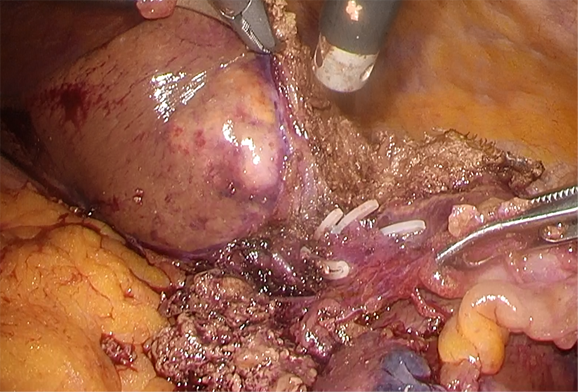Our current policies
Recently, laparoscopic surgery has become widespread in the field of liver surgery. However, because the liver is a unique organ that is large, heavy, and consists of many vascular structures, laparoscopic liver resection is classified as one of the most difficult operation in laparoscopic surgery.
One of the problems with conventional hepatectomy is that it requires a large incision in the abdomen, which hinders postoperative pain and recovery. The advantage of laparoscopic treatment is that it minimizes the destruction of the abdominal wall, resulting in less pain and faster recovery from surgery. Therefore, for tumors on the surface of the liver, laparoscopic resection is the first choice in our clinical practice as long as such procedure can be achieved safely with the same quality compared to open hepatectomy.
Meanwhile, in cases where complex or major hepatectomy is required, not all the patients can be candidates for laparoscopic surgery because it is technically demanding and qualification is required to serve such complex laparoscopic hepatectomy in JAPAN. Our institute meets the facility requirements for performing such highly difficult laparoscopic hepatectomies and we do perform in selected cases. However, because our first priority in liver surgery is the safety, most of the cases that require complex hepatectomy more than subsegmentectomy are currently treated with a hybrid approach using laparoscopy and mini-abdominal incision in our team.
According to the statistics of individual surgical cases, about 10% was laparoscopic (assisted) resection until 2018, but the ratio of laparoscopic resection is significantly increasing to 48.3% in 2019 and up to 75.0% in 2020. Approximately 130-140 hepatectmies are expected to be performed by laparoscopic approach this year.
